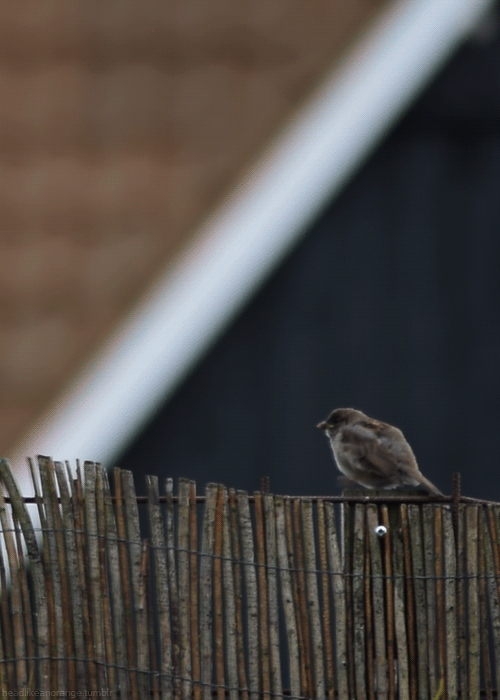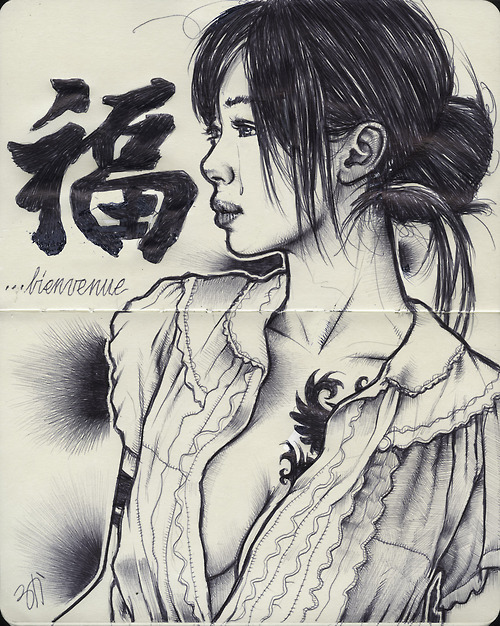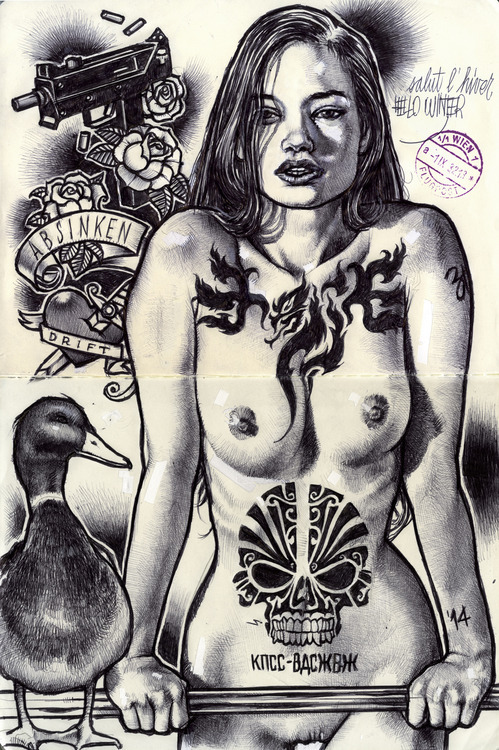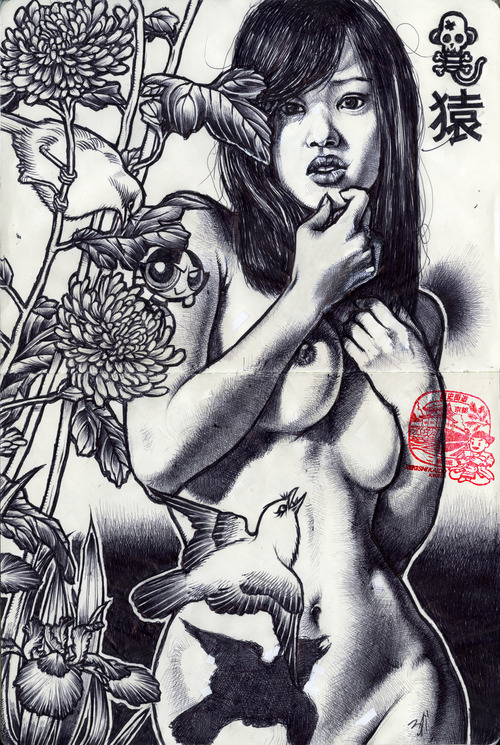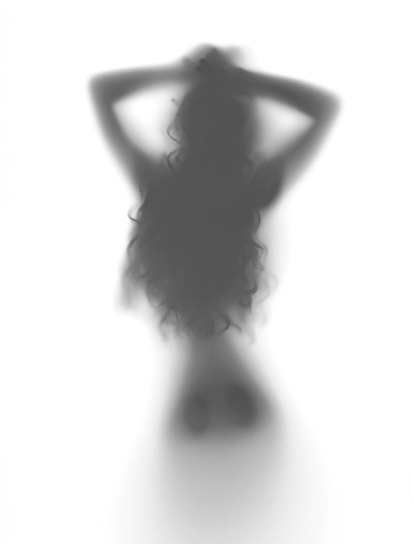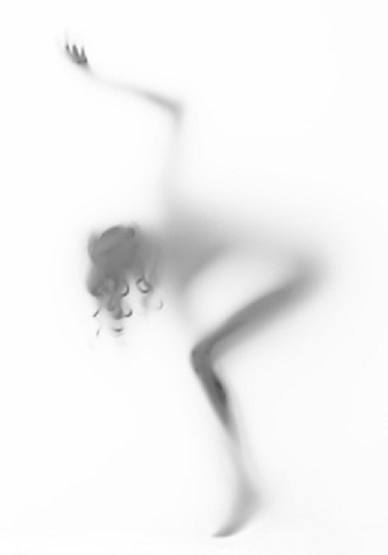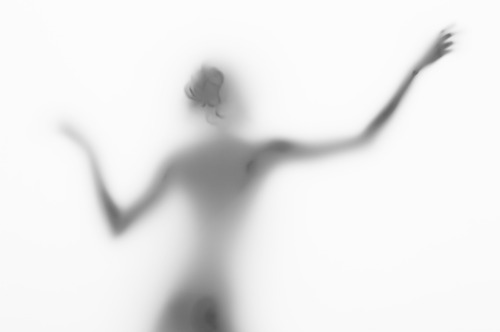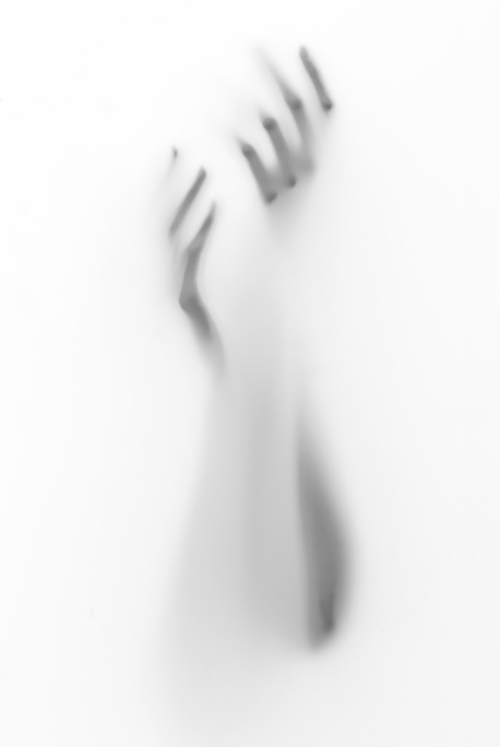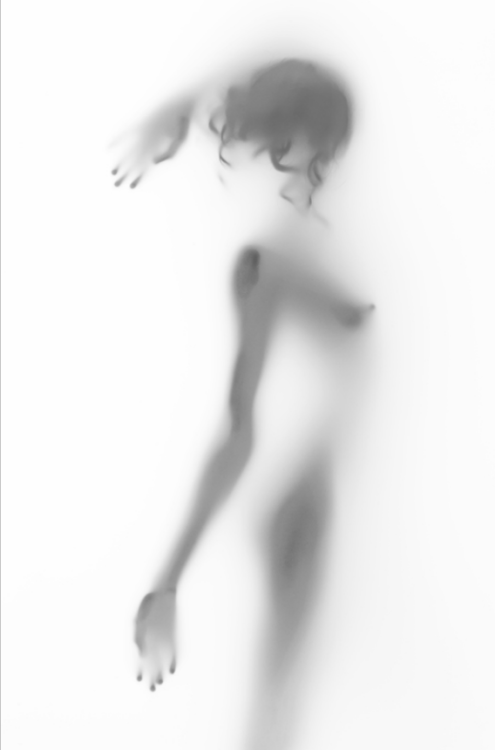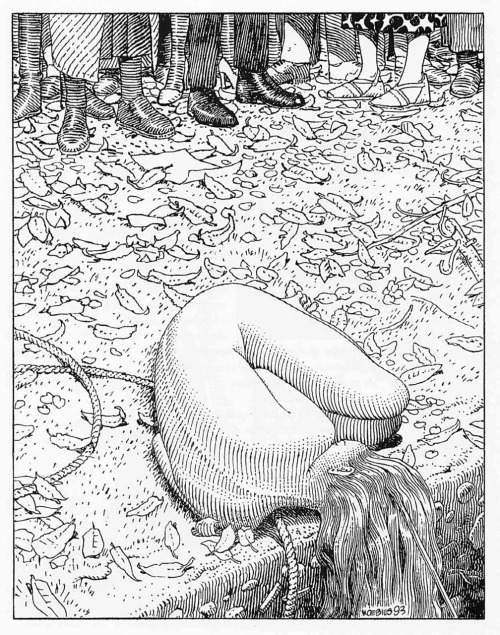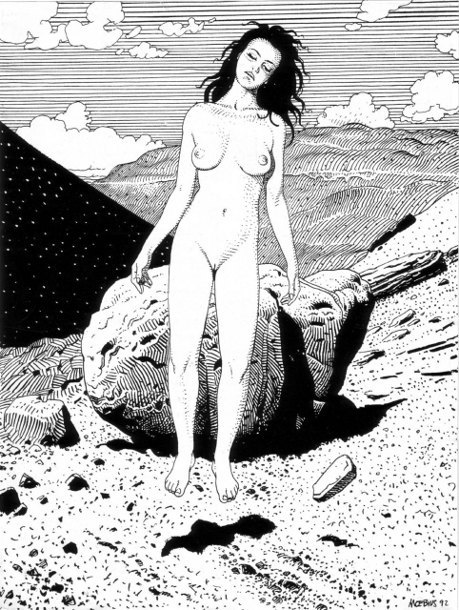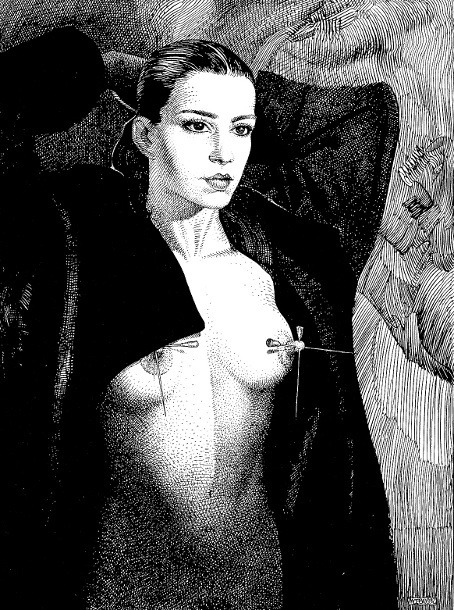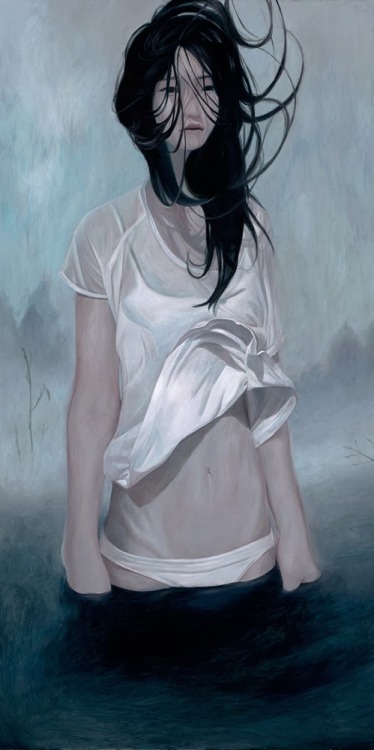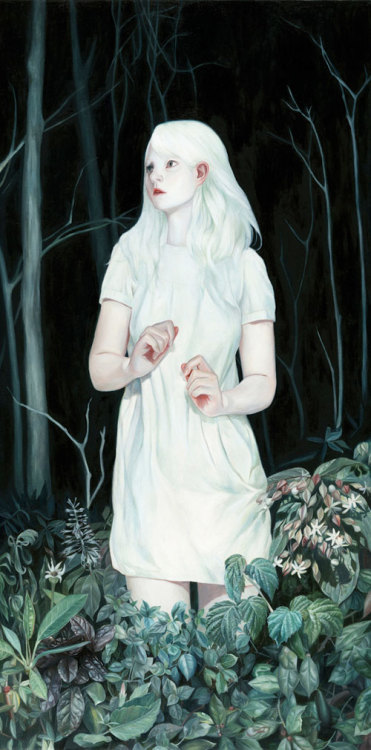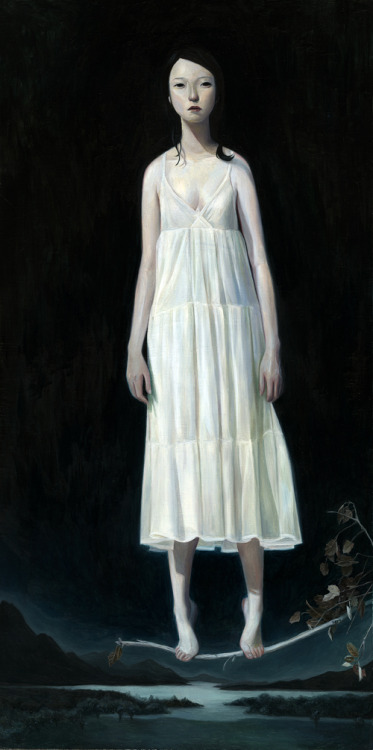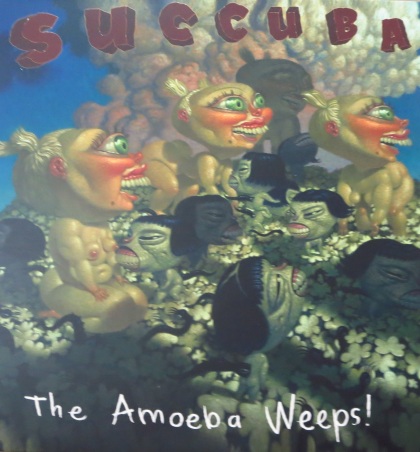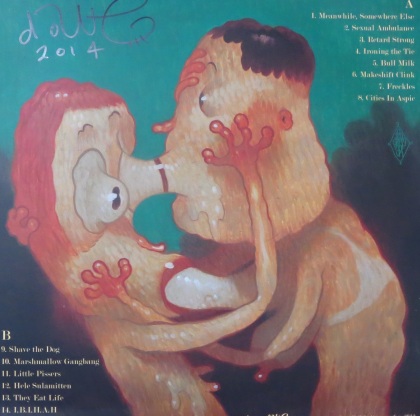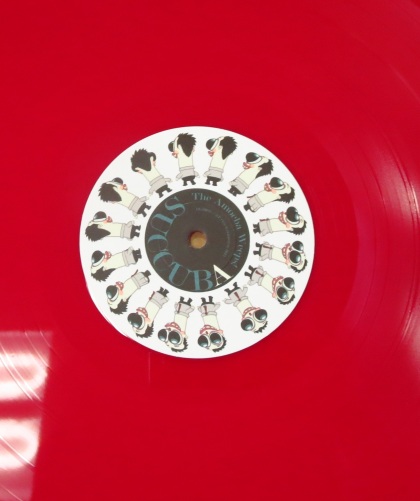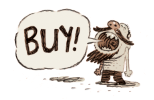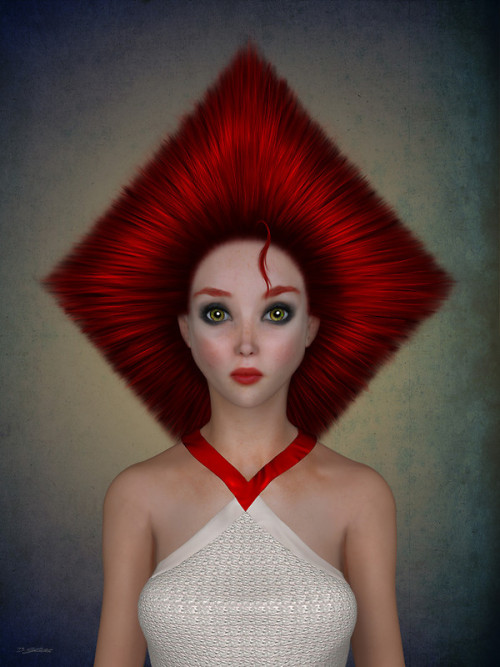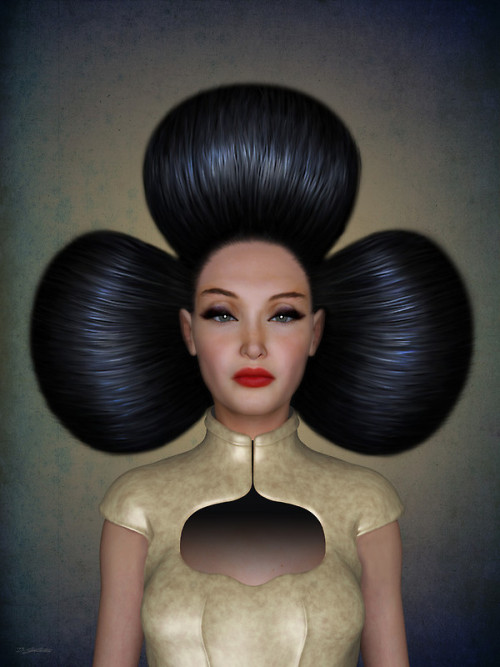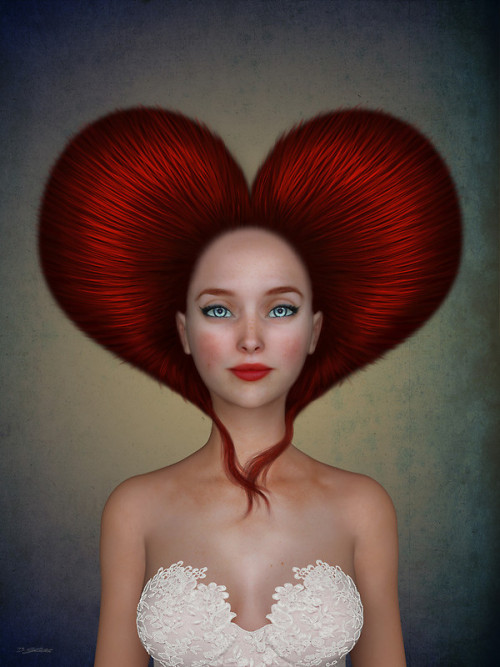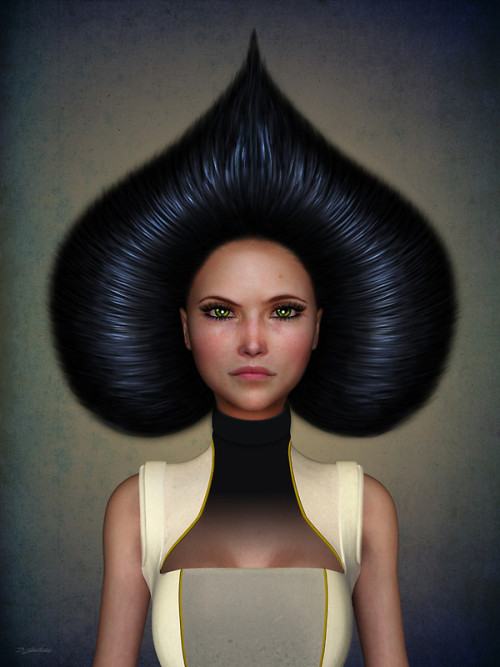sky3000
Shared posts
LOVE IS... Staying strong, together.
Johnny Cash Impersonates Elvis Presley: A Slapstick Version of “Heartbreak Hotel” (1959)
In his autobiography, Johnny Cash recalled meeting Elvis Presley in Memphis, circa 1954:
The first time I saw Elvis, singing from a flatbed truck at a Katz drugstore opening on Lamar Avenue, two or three hundred people, mostly teenage girls, had come out to see him. With just one single to his credit, he sang those two songs over and over. That’s the first time I met him.
Although the two musicians were “never tight,” they liked one another. Cash admired Presley’s rhythm guitar playing and his showmanship. He writes: “Elvis was so good. Every show I did with him, I never missed the chance to stand in the wings and watch. We all did. He was that charismatic.” Which brings us to the short, completely amusing clip found above.
According to the Pig River Records web site (a “comprehensive guide to music as it was 50 years ago”), this footage dates back to a 1959 tour. Cash was the opening act; Presley, the headliner. And each night, “Cash would impersonate his friend and touring partner, and then Elvis would come out and do the same. Two characters just having a good ol’ time whilst simultaneously creating the genre of rock and roll.”
If you want to spend a little more time at the Cash-Presley nexus, I’d encourage you to listen to Million Dollar Quartet, a recording that captures Cash and Presley’s impromptu jam session with Carl Perkins and Jerry Lee Lewis. It was recorded in 1956, at the Sun Record Studios in Memphis.
Finally, if you care to see more Elvis impersonations, you can see how Cash stacks up against Quentin Tarantino and the great Andy Kaufman.
Related Content:
The Earliest Footage of Elvis Presley, Buddy Holly and Johnny Cash (1955)
The First Episode of The Johnny Cash Show, Featuring Bob Dylan & Joni Mitchell (1969)
Library Card Signed by 13-Year-Old Elvis Presley, the Earliest Known Signature of the King
Johnny Cash Impersonates Elvis Presley: A Slapstick Version of “Heartbreak Hotel” (1959) is a post from: Open Culture. Follow us on Facebook, Twitter, and Google Plus, or get our Daily Email. And don't miss our big collections of Free Online Courses, Free Online Movies, Free eBooks, Free Audio Books, Free Foreign Language Lessons, and MOOCs.
The post Johnny Cash Impersonates Elvis Presley: A Slapstick Version of “Heartbreak Hotel” (1959) appeared first on Open Culture.
nevver: Pretty please - Bruce Timm
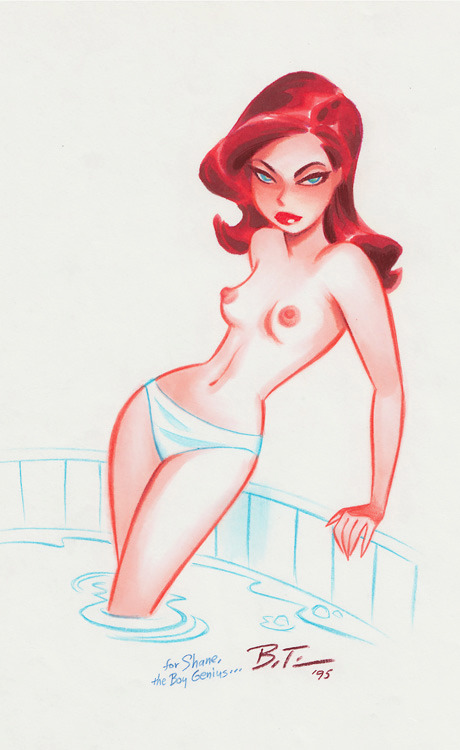
cartoonretro.tumblr.com
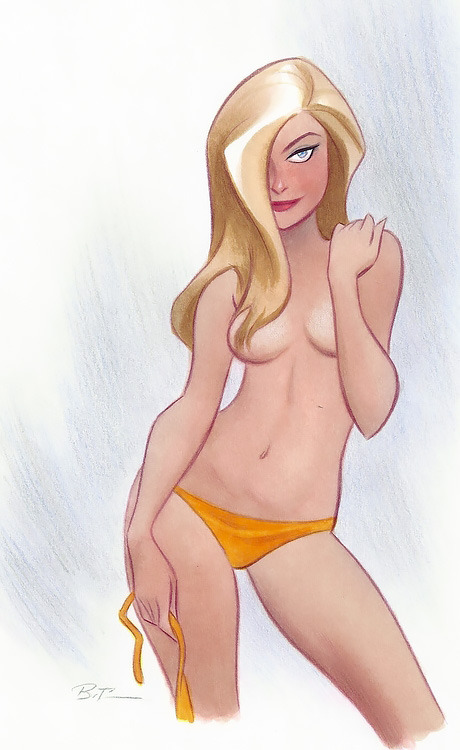
shibacchis-uploads.tumblr.com

tri-stateoriginalart.com

pinterest.com/joegiampapa/bruce-timm/
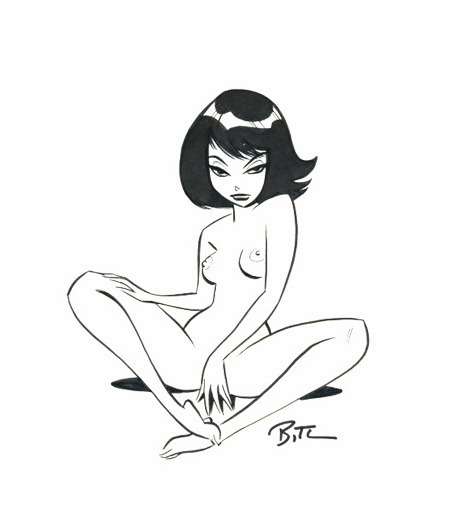
drianwilsoninvisible.tumblr.com

superheropinups.tumblr.com
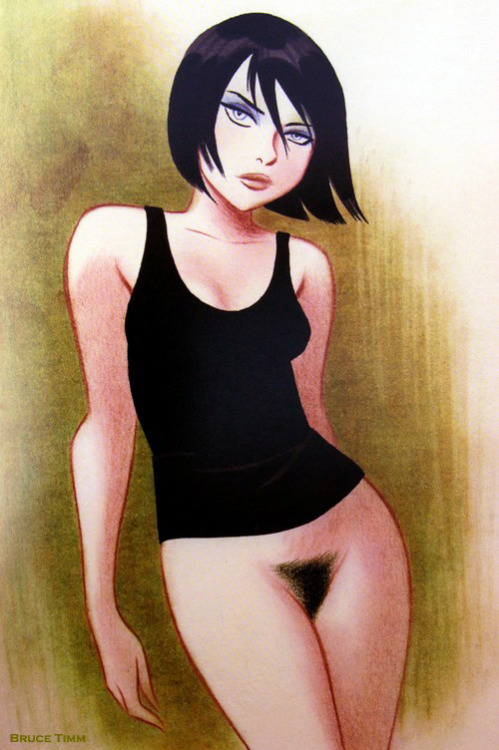
bedetheque.com
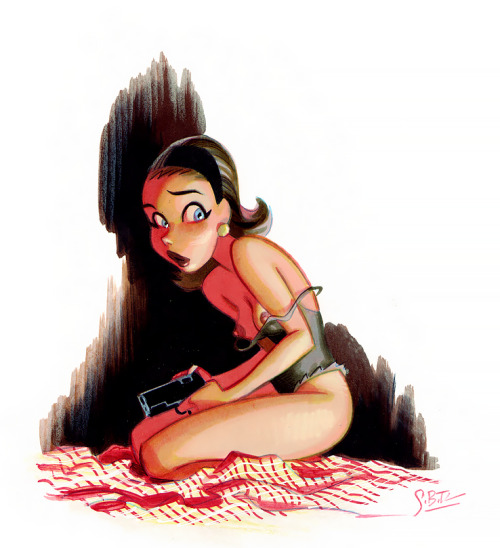
cartoonretro.tumblr.com Color by Bruce Timm
Pretty please - Bruce Timm
Disney’s 12 Timeless Principles of Animation
Animation is essentially an optical illusion- a series of still photographs that create the impression of movement. Though Winsor McCay pioneered ways of making drawings move, Walt Disney’s Nine Old Men were the ones who perfected it. While making Snow White and the Seven Dwarfs, not to mention countless shorts in the 1930s, this team of animators developed 12 basic principles that exaggerated the laws of physics to best bring these images to life.
The principles came to define Disney’s look and became part of the language of animators everywhere. Every time you see Wiley E. Coyote’s eyes bulge to the size of watermelons at the sight of a falling boulder, Olaf the Snowman from Frozen stretch during a sudden stop, or Tigger crouching down before a pounce, you can thank these principles.
Frank Thomas and Ollie Johnson, two of the nine old men, published the principles in their book Disney Animation: Illusion of Life. Jason Kottke has posted a really groovy (animated, of course) video illustrating the 12 Principles. Check it out above. And if you need further review watch this other animated video. The principles, themselves, appear below.
1. SQUASH AND STRETCH
This action gives the illusion of weight and volume to a character as it moves. Also squash and stretch is useful in animating dialogue and doing facial expressions. How extreme the use of squash and stretch is, depends on what is required in animating the scene. Usually it’s broader in a short style of picture and subtler in a feature. It is used in all forms of character animation from a bouncing ball to the body weight of a person walking. This is the most important element you will be required to master and will be used often.
2. ANTICIPATION
This movement prepares the audience for a major action the character is about to perform, such as, starting to run, jump or change expression. A dancer does not just leap off the floor. A backwards motion occurs before the forward action is executed. The backward motion is the anticipation. A comic effect can be done by not using anticipation after a series of gags that used anticipation. Almost all real action has major or minor anticipation such as a pitcher’s wind-up or a golfers’ back swing. Feature animation is often less broad than short animation unless a scene requires it to develop a characters personality.
3. STAGING
A pose or action should clearly communicate to the audience the attitude, mood, reaction or idea of the character as it relates to the story and continuity of the story line. The effective use of long, medium, or close up shots, as well as camera angles also helps in telling the story. There is a limited amount of time in a film, so each sequence, scene and frame of film must relate to the overall story. Do not confuse the audience with too many actions at once. Use one action clearly stated to get the idea across, unless you are animating a scene that is to depict clutter and confusion. Staging directs the audience’s attention to the story or idea being told. Care must be taken in background design so it isn’t obscuring the animation or competing with it due to excess detail behind the animation. Background and animation should work together as a pictorial unit in a scene.
4. STRAIGHT AHEAD AND POSE TO POSE ANIMATION
Straight ahead animation starts at the first drawing and works drawing to drawing to the end of a scene. You can lose size, volume, and proportions with this method, but it does have spontaneity and freshness. Fast, wild action scenes are done this way. Pose to Pose is more planned out and charted with key drawings done at intervals throughout the scene. Size, volumes, and proportions are controlled better this way, as is the action. The lead animator will turn charting and keys over to his assistant. An assistant can be better used with this method so that the animator doesn’t have to draw every drawing in a scene. An animator can do more scenes this way and concentrate on the planning of the animation. Many scenes use a bit of both methods of animation.
5. FOLLOW THROUGH AND OVERLAPPING ACTION
When the main body of the character stops all other parts continue to catch up to the main mass of the character, such as arms, long hair, clothing, coat tails or a dress, floppy ears or a long tail (these follow the path of action). Nothing stops all at once. This is follow through. Overlapping action is when the character changes direction while his clothes or hair continues forward. The character is going in a new direction, to be followed, a number of frames later, by his clothes in the new direction. “DRAG,” in animation, for example, would be when Goofy starts to run, but his head, ears, upper body, and clothes do not keep up with his legs. In features, this type of action is done more subtly. Example: When Snow White starts to dance, her dress does not begin to move with her immediately but catches up a few frames later. Long hair and animal tail will also be handled in the same manner. Timing becomes critical to the effectiveness of drag and the overlapping action.
6. SLOW-OUT AND SLOW-IN
As action starts, we have more drawings near the starting pose, one or two in the middle, and more drawings near the next pose. Fewer drawings make the action faster and more drawings make the action slower. Slow-ins and slow-outs soften the action, making it more life-like. For a gag action, we may omit some slow-out or slow-ins for shock appeal or the surprise element. This will give more snap to the scene.
7. ARCS
All actions, with few exceptions (such as the animation of a mechanical device), follow an arc or slightly circular path. This is especially true of the human figure and the action of animals. Arcs give animation a more natural action and better flow. Think of natural movements in the terms of a pendulum swinging. All arm movement, head turns and even eye movements are executed on an arcs.
8. SECONDARY ACTION
This action adds to and enriches the main action and adds more dimension to the character animation, supplementing and/or re-enforcing the main action. Example: A character is angrily walking toward another character. The walk is forceful, aggressive, and forward leaning. The leg action is just short of a stomping walk. The secondary action is a few strong gestures of the arms working with the walk. Also, the possibility of dialogue being delivered at the same time with tilts and turns of the head to accentuate the walk and dialogue, but not so much as to distract from the walk action. All of these actions should work together in support of one another. Think of the walk as the primary action and arm swings, head bounce and all other actions of the body as secondary or supporting action.
9. TIMING
Expertise in timing comes best with experience and personal experimentation, using the trial and error method in refining technique. The basics are: more drawings between poses slow and smooth the action. Fewer drawings make the action faster and crisper. A variety of slow and fast timing within a scene adds texture and interest to the movement. Most animation is done on twos (one drawing photographed on two frames of film) or on ones (one drawing photographed on each frame of film). Twos are used most of the time, and ones are used during camera moves such as trucks, pans and occasionally for subtle and quick dialogue animation. Also, there is timing in the acting of a character to establish mood, emotion, and reaction to another character or to a situation. Studying movement of actors and performers on stage and in films is useful when animating human or animal characters. This frame by frame examination of film footage will aid you in understanding timing for animation. This is a great way to learn from the others.
10. EXAGGERATION
Exaggeration is not extreme distortion of a drawing or extremely broad, violent action all the time. Its like a caricature of facial features, expressions, poses, attitudes and actions. Action traced from live action film can be accurate, but stiff and mechanical. In feature animation, a character must move more broadly to look natural. The same is true of facial expressions, but the action should not be as broad as in a short cartoon style. Exaggeration in a walk or an eye movement or even a head turn will give your film more appeal. Use good taste and common sense to keep from becoming too theatrical and excessively animated.
11. SOLID DRAWING
The basic principles of drawing form, weight, volume solidity and the illusion of three dimension apply to animation as it does to academic drawing. The way you draw cartoons, you draw in the classical sense, using pencil sketches and drawings for reproduction of life. You transform these into color and movement giving the characters the illusion of three-and four-dimensional life. Three dimensional is movement in space. The fourth dimension is movement in time.
12. APPEAL
A live performer has charisma. An animated character has appeal. Appealing animation does not mean just being cute and cuddly. All characters have to have appeal whether they are heroic, villainous, comic or cute. Appeal, as you will use it, includes an easy to read design, clear drawing, and personality development that will capture and involve the audience’s interest. Early cartoons were basically a series of gags strung together on a main theme. Over the years, the artists have learned that to produce a feature there was a need for story continuity, character development and a higher quality of artwork throughout the entire production. Like all forms of story telling, the feature has to appeal to the mind as well as to the eye.
via Kottke
Related Content:
How Walt Disney Cartoons Are Made
Donald Duck Wants You to Pay Your Taxes (1943)
Walt Disney Presents the Super Cartoon Camera (1957)
Jonathan Crow is a Los Angeles-based writer and filmmaker whose work has appeared in Yahoo!, The Hollywood Reporter, and other publications. You can follow him at @jonccrow.
Disney’s 12 Timeless Principles of Animation is a post from: Open Culture. Follow us on Facebook, Twitter, and Google Plus, or get our Daily Email. And don't miss our big collections of Free Online Courses, Free Online Movies, Free eBooks, Free Audio Books, Free Foreign Language Lessons, and MOOCs.
The post Disney’s 12 Timeless Principles of Animation appeared first on Open Culture.
Fledgling blackbird and its parent
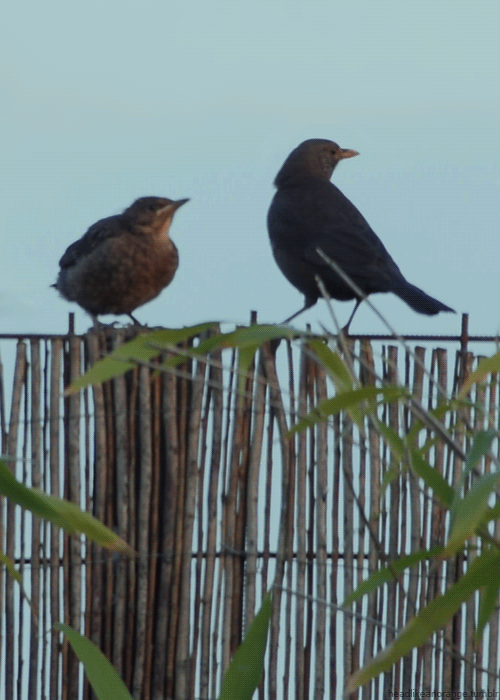
Fledgling blackbird and its parent
NEVER FORGET. (street art)
Figure drawing | process of paintings.
Graphite, coloured pencil and ballpoint on paper.
This month I gave a lecture at The Graphic Design Academy in Utrecht.
My old teacher invited me to join his figure drawing class in the evening.
Had a great time and it's very good practise.
Graphite and coloured pencil on hardwood panel.
Graphite, acrylics on hardwood panel.
Graphite, ballpoint ink, colourpencils on hardwood panel.
I'm working on several works on hardwood panel. 35 cm x 50 cm.
Because I'm always experimenting with different material on one background, it's fun but also quite challenging.
Where the Wild Things are
Where the Wild things are
Ink on clayboard

Listen to John Cage’s 5 Hour Art Piece: Diary: How To Improve The World (You Will Only Make Matters Worse)
John Cage was born in 1915 and died in 1992. During that intervening time, he changed the face of avant-garde music and art.
An early disciple of Arnold Schoenberg, Cage made his biggest creative breakthrough by studying the I Ching, Zen Buddhism and the art of Marcel Duchamp. The composer decided to let elements of chance into his work. He started to write pieces for a “prepared piano” where things like thumbtacks, nails and forks were placed into the instrument’s strings to alter its sound in unexpected ways.
Cage’s most famous work, 4’33”, took conceptual music about as far as it could go. A musician walks out onto the stage, sits in front of a piano and does absolutely nothing for four minutes and thirty seconds. The sounds of the audience rustling, the traffic outside and any other ambient noise that might happen during that time period become a part of the piece. Watch a performance here.
The folks over at Ubu.com have placed online another one of Cage’s work, Diary: How To Improve The World (You Will Only Make Matters Worse) (1991). Clocking in at over 5 hours total, the piece is something of a Mount Everest of sound art.
Recorded in Switzerland a little over a year before his death, Diary features thoughts, observations and insights along with quotes from the likes of Buckminster Fuller, Henry David Thoreau and Mao Zedong. You can listen to Part 1 below, and click these links to listen to the remaining parts: Part 1, Part 2, Part 3, Part 4, Part 5, Part 6, Part 7, Part 8.
Cage’s diaries appeared previously in print as M: Writings, 1967-72. On the page, the text randomly changed both font and letter size. You can see what this looks like here. Cage and company reproduced this effect in the audio version by changing the position of the microphone and the recording volume. If you listen to Diary on headphones (which I recommend), you’ll hear Cage’s silken voice first behind your left ear, then in front of you and then, disconcertingly, inside your head.
Much of the time, Cage’s words will feel obscure and poetic. And then, as you’re lulled by the rhythm of his voice, he’ll hit you with something as profound as a Zen koan. (“The goal is not to have a goal.”) Just sit back and let the words flow over you.
Related Content:
Hear Joey Ramone Sing a Piece by John Cage Adapted from James Joyce’s Finnegans Wake
Watch a Surprisingly Moving Performance of John Cage’s 1948 “Suite for Toy Piano”
Woody Guthrie’s Fan Letter To John Cage and Alan Hovhaness (1947)
Jonathan Crow is a Los Angeles-based writer and filmmaker whose work has appeared in Yahoo!, The Hollywood Reporter, and other publications. You can follow him at @jonccrow.
Listen to John Cage’s 5 Hour Art Piece: Diary: How To Improve The World (You Will Only Make Matters Worse) is a post from: Open Culture. Follow us on Facebook, Twitter, and Google Plus, or get our Daily Email. And don't miss our big collections of Free Online Courses, Free Online Movies, Free eBooks, Free Audio Books, Free Foreign Language Lessons, and MOOCs.
The post Listen to John Cage’s 5 Hour Art Piece: Diary: How To Improve The World (You Will Only Make Matters Worse) appeared first on Open Culture.
Chris Labrooy's "Flight Intestine"
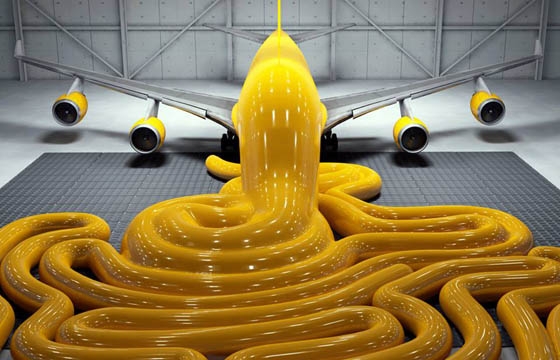
Ferdinand
This Sealed Bottle Garden Hasn’t Been Watered Since 1972
The Daily Mail has a fascinating feature on David Latimer and his soon to be 54-year-old bottle garden that he started on Easter Sunday back in 1960.
Using a ten gallon carboy, Latimer poured in some compost, a quarter pint of water and carefully lowered in a spiderwort seedling (Tradescantia) using a piece of wire. He then placed the bottle garden by a sun-filled window in his home and let photosynthesis do its thing.
It wasn’t until 1972 (12 years later) that Latimer gave his bottle garden another drink and it has been sealed ever since! How exactly does this work? The Daily Mail explains:
- Bottle gardens work because their sealed space creates an entirely self-sufficient ecosystem in which plants can survive by using photosynthesis to recycle nutrients
- The eco-system also uses cellular respiration to break down decaying material shed by the plant. In this part of the process, bacteria inside the soil of the bottle garden absorbs the plant’s waste oxygen and releasing carbon dioxide which the growing plant can reuse
- The water in the bottle gets taken up by plants’ roots, is released into the air during transpiration, condenses down into the potting mixture, where the cycle begins again
For more pictures and information on this story, along with a video tutorial on how to make your own bottle garden, see the full article on the Daily Mail.
If you enjoyed this post, the Sifter
highly recommends:
Staple Metropolises by Peter Root

In two projects entitled, Ephemicropolis (2010) and Low-Rise (2006), late artist Peter Root used stacks of staples broken into various sizes to create miniature metropolises.
For Ephemicropolis, Root used approximately 100,000 staples over a floor area of 20 x 10 feet (600 x 300 cm). The installation took a very steady hand and roughly 40 hours to create. You can see a timelapse of the build below. Low-Rise, which is a smaller overall installation took approximately 30 hours to build. You can also find a timelapse of the project below.
Tragically, Peter and his wife Mary Thompson (both 34) died in a road accident in February 2013 in Thailand, while the couple were on a round-the-world cycling odyssey. The couple met in art school and had spent six years saving money and planning their journey. The couple had been posting photos and details of their trip on the website Two on Four Wheels.
To see more of Peter’s artwork you can visit his website at peterroot.com
1.

2.

3.

4.

5.

6.

7.

The Making of Ephemicropolis
The Making of Low-Rise
If you enjoyed this post, the Sifter
highly recommends:
30 Day Challenge // Day 24 // Something That Represents Your...

30 Day Challenge // Day 24 // Something That Represents Your Favorite Culture
I’m Buddhist and I’ve always loved the imagery even before I was. The wrathful deities from Tibetan and Mahayana art always fascinated me as a kid. They were like transformations the gods took on in battle. Like a monster magical girl I guess. His is name is Mahakala. Power Prism Make Up.
03/19/14 PHD comic: 'Cosmic Inflation Explained'
| Piled Higher & Deeper by Jorge Cham |
www.phdcomics.com
|
|
 |
||
|
title:
"Cosmic Inflation Explained" - originally published
3/19/2014
For the latest news in PHD Comics, CLICK HERE! |
||
Winners Highlights from the 2014 Sony World Photography Awards
The winners for the Open, Youth and National Award competitions of the 2014 Sony World Photography Awards were announced today by the World Photography Organisation (WPO).
Selected from over 70,000 entries from across the world, all three competitions were judged on a single shot and prizes ranged from the latest Sony digital imaging equipment to trips to London to attend the Sony World Photography Awards gala ceremony on 30 April 2014. The ten Open winners will also compete for a $5,000 (USD) prize and the Overall Open Photographer of the Year title.
139,554 images were entered in total to the 2014 Sony World Photography Awards: 69,114 Professional entries (winners yet to be announced); 65,512 Open entries and 4,928 Youth entries images. Entries to the National Awards were selected from the Open competition.
Professional category winners and the coveted L’Iris D’Or/ Sony World Photography Awards Photographer of the Year title will be announced at a gala ceremony in London on 30 April 2014. The L’Iris D’Or winner will receive $25,000 (USD) and the Open Photographer of the Year will receive $5,000 (USD).
A full list of the winners of the National Awards programme can be seen at: worldphoto.org/nationalaward
Tickets for the 2014 Sony World Photography Awards Exhibition in London are now on sale at: worldphoto.org/2014exhibition
1. Jump of Life
Cheung Lai San, Hong Kong
Hong Kong National Award – 1st Place

In July each year, this heart-pounding scene of wildebeests migration repeats itself in Kenya savanna. It’s wildlife’s most dramatic moment! I am so excited to be able to capture this in my camera.
2. Rain in an ancient town
Chen Li, China
Open Travel – Winner

My photo “Rain in Ancient Town” was shot in southern China- phoenix Town, which shows the scene of people traveling in the rain during the rainy season. Tripod was used for this picture and I used slow shutter on purpose to combine the static and dynamic status of tourists. On the background there are old residential buildings and an old stone bridge, this combination enabled a more spiritual atmosphere for the photo.
3. Poor god
Arup Ghosh, India
Open People – Winner

“I was on a Durga Puja Festival vacation, travelling on a local train. A boy was singing devotional song and begging for alms. He was guised as a Hindu God, Lord Shiva. This is a common view in Indian Trains. But this boy was charming, bright and did have a melodious voice. He could not earn any money from the compartment and was sad. He was singing alone, standing by the door. Our destination was arriving and we approached the door. My camera was ready hanging on my neck, with the 20mm wide lens attached. I took 3 shots of the boy and got off the train. Before leaving, my daughter gave him an apple and I gave him some money. The boy moved to the next compartment happily. These children are from very poor family. Their parents work as contract workers on a very poor daily wage. They work all day long in the fields. The children sing and beg for money to earn bread for the family, when their parents cannot manage a contract. Yet they are cheerful, happy and friendly.”
4. What are you staring at !?
Chin Boon Leng, Singapore
Singapore National Award – 1st Place

A baby Orangutan peeking out from his mother’s embrace
5. Under the staircase
Holger Schmidtke, Germany
Open Architecture – Winner

I’ve seen similar images of staircases and so I try to do it my way. In a Office-Building in Cologne I went down to the Zero-Ground of the staircase. I spread my tripod to get a near bottom position and fixed it in the middle of this motif. With the wide-angle 10 – 24mm lens I took some Raw-Photos. The image ” under the Staircase ” is one of them developed with LightRoom.
6. Photographer story – Behind the Scene
Hairul Azizi Harun, Malaysia
Open Split Second – Winner

Being a photographer is not easy, people may not know the many challenges that photographers had to face to attain the perfect image. Sometimes the story behind the image is much more interesting than what is seen in the picture. It our job as a photographer to convey the story and breathe life to that image. Captured in a village in Kuantan, Pahang. Malaysia. The image was captured in high shutter speed and using available light only. This photo narrates the pains and gains of being a photographer, the heritage of an old house, forgotten traditional games and the old generations meeting the new which complimented each other very well.
7. A touch of a 17th century Dutch painting
Theo de Witte, the Netherlands
Netherlands National Award – 1st Place

Unfortunately you don’t have the winters anymore you used to have in the 17th century. In the beginning of 2013 I was lucky with a short time of winter. I had the idea to take a picture of an old Dutch landscape and was looking for a perfect location: which I found in Dwarsgracht, a small authentic village. Looking for the perfect light I’d been waiting for hours for the golden glow. I decided to find a high position, which I found in a tree for which I had to borrow a ladder from the locals to climb the tree. So I had a good view on the ice when the last skaters past by, they made the picture complete.
8. Starry lighthouse
Ivan Pedretti, Italy
Open Panoramic – Winner

“It’s a stitched panorama of 12 horizontal shots, 2 rows, each shot is a long exposure with tripod at 30 seconds shutter speed, f2.8 aperture and iso 3200 on canon 50D and tokina 11-16 2.8. I was about 4 am in the night of April 2013 for capturing the milky way arch form south to north in the lighthouse in Capo Spartivento, south Sardinia. The main difficulty was the right to overlap the shots, also another problem was the bright rays of the lighthouse, I was about 20m away, and I had to cover the lens at the time of the passage of the beam to avoid excessive overexposure, so I timed rotation times of the light beam consists of four rays and this process was repeated at least 6 times within 30 seconds of exposure and for 12 shots. I was fascinated by the landscape I saw in south coast of my island, the lighthouse made everything special.”
9. Fire Dragon
Chi Hung Cheung, Hong Kong
Hong Kong National Award – 2nd Place

It is the festival in Macau
10. Hummingbird
Kristhian Castro, Colombia
Colombia National Award – 2nd Place

Rufous Tailed Hummingbird (Amazilia tzacatl) flying.
11. Samsara
Wolfgang Weinhardt, Germany
Germany National Award – 3rd Place

All scenes were taken in early 2013. This year i had the pleasure to join the pilgrims and devotees of the Maha Kumbh Mela – the largest spiritual gathering on the planet, held every 12 years. Furthermore I travelled different parts of Indonesia and South-India to complete my buffalo race-catalogue. An impressive trip to the Javanese miners of Kawah Ijen and other familiar insights was another highlight.
12. Exit
Michael Nordqvist, Sweden
Nordics National Award – 1st Place

The picture is a self portrait taken half a second after exiting the aircraft. I held the camera in my hand pointing it to the helmet to catch the sky and aircraft in the mirror of the visor. The jump was performed over Skydive Skåne DropZone in southern Sweden.
13. Not Superman
Irwansyah, Indonesia
Indonesia National Award – 1st Place

Pacu Jawi or a cow race can be called in Indonesian is a traditional game that is contested attraction in Tanah Datar district, West Sumatra, Indonesia. Every year, a cow race was held in rotation for four weeks in four districts in Tanah Datar district, namely Pariangan districts, districts propagation, The Five districts, and districts Tarab River.
14. Panco
Adhi Prayoga, Indonesia
Indonesia National Award – 2nd Place

Celebration
15. Tin Oven Builders
Minh Ngo Thanh, Vietnam
Vietnam National Award – 3rd Place

This is an image tile oven builders in Vinh Long city
16. Rodeo
Valerie Prudon, France
Open Arts & Culture – Winner

This photo was taken in Branxton, Australia in October 2013. After shooting some of the rodeo itself, I decided to go behind the scene to capture the typical environment of this kind of event. This is when I noticed this group of cowboys having a chat and relaxing. Their specific outfits, their boots, their hats and the horses in the background with the sunset made this photo authentic. This was THE moment and I am glad I took a few seconds to immortalize it.
17. The Mongol
Simon Morris, United Kingdom
United Kingdom National Award – 2nd Place

A hunter rests in his little house on the plains ..western Mongolia with his Eagle which is hooded and cat under the table!
18. The Calm Before the Storm
Sean Batten, United Kingdom
United Kingdom National Award – 1st Place

A photo of one of the hallways at Canary Wharf tube station in London.
19. Untitled
Elly Prestegard, Norway
Nordics National Award – 2nd Place

My images are built up from different photos, layer by layer. I break down the motive, build up a new layer by repeating details. This process is repeated, over and over again through the process. Many of the images has been printed 150 x 150 cm, and are part of the art collection of KLP in Norway. I am fascinated by the rhythm in everything existing. By repeating fragments, it is like looking into a kaleidoscope where new connections create patterns, following the same rules as nature. The two seed pictures are built on the same fascination of nature, but are photos taken directly into the pot of seeds, and then reworked digitally, but not broken down in details as the others.
20. Untitled
Bobby Bong, Indonesia
Indonesia National Award – 3rd Place

21. The inhabitant of Szack of Ukraine and her horse
Mateusz Baj, Poland
Poland National Award – 1st Place

The photograph shows Tatiana-the inhabitant of Shatsk in Ukraine- with her horse. In Ukrainian villages, horses remain an indispensable work force in farm life.
22. Sahara Express
Rafael Gutiérrez Garitano, Spain
Spain National Award – 1st Place

Young Mohammed Salam –in the foreground- travels regularly on iron ore hoppers through the Mauritanian Sahara, from the open-pit hematite mine centre of Zouérat, to the commercial port of Nouadhibou. The journey is precarious and exhausting, but free transportation of goods provide him and his colleagues with a way to make a living. The so called “Sahara Express” was completed in 1963, three years after Mauritania’s independence as a french colony, and it is considered one of the longest trains in the world. Exceeding 2.5 km long, it runs daily almost 700 Km from the deep desert to the Atlantic coast and it takes about 17 hours. The 7.5 million tonnes of iron ore it transports every year in more than 200 freight cars, account for almost 50% of total exports, so it is vital for the Mauritanian economy, which has one of the lowest GDP rates of Africa.
23. Organillero
Cristian Alvarado, Chile
Chile National Award – 1st Place

Street musician walks away, is one of the few remaining traditions
24. Ripples in the calm lake
Dowon Choi, South Korea
South Korea National Award – 1st Place

There was no borderline between sky and lake by a thick veil of haze at dawn on that day. And the waves ruffled on the silence lake
25. Going Home
Neville Jones, Australia
Australia National Award – 1st Place

On the Li River near Xingping in China, Cormorant fishermen work the waterways before dawn amidst the spectacular limestone towers of the Karst landscape. The birds are trained to fetch fish from the inky depths but not swallow them. The fisherman accepts the fish from the birds who dive back for more. Here, still before dawn, the fisherman and his birds head for home.
26. Mourning ceremony Imam Hussein
Bohran Mardani, Iran
Youth Culture – Winner

Every year Shiites in the city of Bijar, Iran, hold Imam Hussein mourning ceremonies. Today, this ceremony has become a tourist attraction and people from all over the world come to see the event. This type ceremony can vary greatly in various Shiite cities, but in Bijar it is held on the streets.
27. Untitled
Andrew Cornaga, New Zealand
New Zealand National Award – 2nd Place

Joseph Parker knocks out Francois Botha. Hydr8 Zero Explosion Boxing event by Duco Promotions. Trusts Stadium. Auckland, New Zealand. Thursday 13 June 2013.
28. Confesiones
Luis Chandi Páez, Ecuador
Ecuador National Award – 1st Place

A flash of divinity expressed in a beam of light in response to the prayer of the man! Picture taken inside the Church of the Convent of San Agustín de Quito in an excellent morning of March equinox, a wonderful show in a temple as part of the historic center of Quito declared “First Cultural Heritage” by UNESCO on 18 September 1978.
29. Facing the Deep
Patrick Ems, Switzerland
Switzerland National Award – 1st Place

30. Morning Fishing
Trinh Xuan Hai, Vietnam
Vietnam National Award – 1st Place

The image was taken in the morning at the Haitien Beach in Thanh Hoa Province in Vietnam. The fisherman was fishing to earn for living in while the thunderstorm was coming.
31. Lightning
Lise Sundberg
Nordics National Award – 3rd Place

This photo I captured after an hour of patience. Suddenly the sky turned white and this image appeared on my camera-screen.
32. Lightsnake
Holger Schmidtke, Germany
Germany National Award – 1st Place

This ArtWork on a hill is one of a few not temporary landmarks in the industrial Ruhr-Region of Germany, located in Duisburg. Some photos were taken on a clear summer late evening in the “blue hour” in front of this installation from public area. This image is the result of 5 single Raw-photos produced at least with NIK HDR Efex pro to one HDR-Image and finished with Adobe Lightroom.
33. Life and line
Turjoy Chowdhury, Bangladesh
Youth Environment – Winner

This photo was taken at Kawranbazar Slum, Dhaka; where people live along with two rail tracks on both of the sides and when there is no train, this rail tracks become their common space. I realized that this place has a lot of visual potential. One day, while returning home after a day long shoot (not having so interesting photos) suddenly I saw, one little girl is feeding a kid standing just right in the middle of the two tracks. At that moment the rail tracks were telling me that this should be my frame and I clicked. This photo fulfilled my thirst for that day.
34. First Snow
Vlad Eftenie, Romania
Open Low Light – Winner

Bucharest, Turda Blvd., 41 tram station. As the weather got worse in the evening, I hesitated to use the camera before. Before i spotted one interesting situation, with pedestrians walking against car lights, on a zebra. I moved on without taking the photo. Between two tram stations, sleet turned into snow. I went down to the first station and I told myself that I had to take a picture of the situation. Things where changing before me. The flakes had become chaotic as sharp cold wind became annoying. Cars where barely advancing, the light was difficult, the woman with umbrella was standing there petrified. I pulled out the camera and took the picture, handheld, marking the first snow of the year.
35. Fire Breath
David Carchi, Ecuador
Ecuador National Award – 3rd Place

36. Untitled
Minwei Yan, China
China National Award – 3rd Place

37. Children Day
Suthas Rungsirisilp, Thailand
Thailand National Award – 1st Place

I take it on 12 January 2013, at Dusit Zoo, Bangkok. The area is the fountain of the zoo but on The Nation Children Day of Thailand. They allow children to play in the fountain and they enjoy very much. I visit there and captured the joyful life with my Sony NEX 7 and 16 mm OSS.
38. Untitled
Paulina Metzscher, Germany
Youth Portraits – Winner

“The photograph was taken during my journey to China in November 2013 with my best friend. During my time in China, I really got into street photography and eventually fell in love with it. The photograph was taken while we were on a night train. We stayed there for 24 hours, so I was in a confined space for a quite limited amount of time. I got up early in the morning to get out and to capture the atmosphere you could find amongst the travelers. And then I found that girl who attracted my attention from the very first moment I saw her. Somehow, she perfectly conveyed a sense of the atmosphere that was present amongst the many travelers on the train. Most of them were waiting eagerly to reach their individual destinations, many of them looking out of the window and watching the world pass by as the train sped through the country. They were completely captivated by the landscape flying by. To me, the little girl stood out from all the other passengers on the train, as in the heat and speed of the moment, she took a minute to herself, completely unaware of everything that was going on around her. She just seemed to be in her own little world, and somehow seemed to have escaped the confined space of the train, even if merely in her thoughts.”
39. Smiles in the Cemetery
Milko Torres Ramirez, Peru
Peru National Award – 1st Place

A man sells balloons in a cemetery in the capital (Lima-Peru) in order to cheer families will remember their dead.
40. Muddy Smile
Alpay Erdem, Turkey
Open Smile – Winner

I was in Fethiye Turkey last summer for work. She wanted me to take her photo when she was in the air. I took this image on a fast shutter speed to capture her in the air jumping into the lake after coming out of the mud bath. The result was interesting. With the smile on her face and the way she jumped, she seemed to prove how insignificant her age was. she was the hero of the day. Photo taken in Dalyan – Fethiye
If you enjoyed this post, the Sifter
highly recommends:
Hyperrealistic Still Life Paintings by Jason de Graaf
Born in 1971 in Montreal, Quebec, Canada, artist Jason de Graaf specializes in hyperrealistic still life paintings using acrylics. In an interview with Poets and Artists magazine (p. 83), de Graaf says he went to college for illustration and design but fell in love with painting after an illustrator named Sharif Taraby came into his class to give a painting demonstration.
Jason is represented by Galerie de Bellefeuille in Montreal. In his artist statement he explains:
“My paintings are about staging an alternate reality, the illusion of verisimilitude on the painted surface, filtered so that it expresses my unique vision. Though my paintings may appear photoreal my goal is not to reproduce or document faithfully what I see one hundred percent, but also to create the illusion of depth and sense of presence not found in photographs.
Many of my paintings are about the relationship of light with reflective and transparent surfaces and my journey to understand those qualities and convey my sense of wonder and intrigue over them. In all of my paintings the subject matter is a springboard and a means to explore my ability to communicate something unique to the viewer.”
Below you will find a small selection of Jason’s incredible artwork. To see more, visit his website at jasondegraaf.blogspot.com
1. Aether
Acrylic on canvas 27″ x 44″

2. Bedlam
Acrylic on canvas 30″ x 24″

3. Odyssey
Acrylic on canvas 30″ x 40″

4. Untitled
Acrylic on canvas 30″ x 30″

5. Fluid Mechanics
Acrylic on panel 22″ x 42″

6. Colossus
Acrylic on panel 24″ x 24″

7. Ice Palace
Acrylic on canvas 24″ x 36″

8. Dalliance
Acrylic on canvas 36″ x 24″

9. Citadel
Acrylic on canvas 30″ x 40″

10. Suspension of Disbelief
Acrylic on canvas 24″ x 36″

11. Parallel Lines That Never Meet
Acrylic on canvas 36″ x 36″

12. Evergreen
Acrylic on canvas 25″ x 40.5″

If you enjoyed this post, the Sifter
highly recommends:
NASA Celebrates ‘Cosmos’ Reboot with Amazing Set of Space Images
This past Sunday (9 March 2014) marked the premier of Cosmos: A Spacetime Odyssey. Hosted by astrophysicist Neil deGrasse Tyson, the new 13-part Cosmos is a 21st-century follow-up to the landmark 1980 series hosted by famed astronomer Carl Sagan, who passed in 1996.
The reboot was written by Ann Druyan (Sagn’s widow) and Steven Soter, whom both collaborated on the original series. Family Guy creator Seth MacFarlane—who was a huge fan of the original series—serves as executive producer on the new show.
To celebrate the series remake, NASA released an incredible 42-picture Flickr album entitled, ‘Cosmos’ – NASA Images of a Space-Time Odyssey. The Sifter has compiled our personal favourites below, but be sure to head over to Flickr to see all of the breathtaking images in the gallery!
1. Crab Nebula

The Crab Nebula is a supernova remnant, all that remains of a tremendous stellar explosion. Observers in China and Japan recorded the supernova nearly 1,000 years ago, in 1054.
2. Horsehead Nebula (19 April 2013)

Astronomers have used NASA’s Hubble Space Telescope to photograph the iconic Horsehead Nebula in a new, infrared light to mark the 23rd anniversary of the famous observatory’s launch aboard the space shuttle Discovery on April 24, 1990. Looking like an apparition rising from whitecaps of interstellar foam, the iconic Horsehead Nebula has graced astronomy books ever since its discovery more than a century ago. The nebula is a favorite target for amateur and professional astronomers. It is shadowy in optical light. It appears transparent and ethereal when seen at infrared wavelengths. The rich tapestry of the Horsehead Nebula pops out against the backdrop of Milky Way stars and distant galaxies that easily are visible in infrared light.
3. Cat’s Eye Nebula

The Cat’s Eye Nebula, one of the first planetary nebulae discovered, also has one of the most complex forms known to this kind of nebula. Eleven rings, or shells, of gas make up the Cat’s Eye. The image from Hubble’s Advanced Camera for Surveys (ACS) shows a bull’s eye pattern of eleven or even more concentric rings, or shells, around the Cat’s Eye. Each ‘ring’ is actually the edge of a spherical bubble seen projected onto the sky — that’s why it appears bright along its outer edge.
Observations suggest the star ejected its mass in a series of pulses at 1,500-year intervals. These convulsions created dust shells, each of which contain as much mass as all of the planets in our solar system combined (still only one percent of the Sun’s mass). These concentric shells make a layered, onion-skin structure around the dying star. The view from Hubble is like seeing an onion cut in half, where each skin layer is discernible.
4. Magnificent CME Erupts on the Sun (31 August 2012)

On August 31, 2012 a long filament of solar material that had been hovering in the sun’s atmosphere, the corona, erupted out into space at 4:36 p.m. EDT. The coronal mass ejection, or CME, traveled at over 900 miles per second. The CME did not travel directly toward Earth, but did connect with Earth’s magnetic environment, or magnetosphere, causing aurora to appear on the night of Monday, September 3. This is a lighten blended version of the 304 and 171 angstrom wavelengths.
5. Aurora Over Whitehorse, Yukon (3 September 2012)

On August 31, 2012 a long filament of solar material that had been hovering in the sun’s atmosphere, the corona, erupted out into space at 4:36 p.m. EDT. The coronal mass ejection, or CME, traveled at over 900 miles per second. The CME did not travel directly toward Earth, but did connect with Earth’s magnetic environment, or magnetosphere, causing aurora to appear on the night of Monday, September 3. Swirls of green and red appear in an aurora over Whitehorse, Yukon on the night of September 3, 2012. The aurora was due to a coronal mass ejection from the sun, which erupted on August 31.
6. Black Marble – Asia and Australia

This image of Asia and Australia at night is a composite assembled from data acquired by the Suomi NPP satellite in April and October 2012. The new data was mapped over existing Blue Marble imagery of Earth to provide a realistic view of the planet. The nighttime view was made possible by the new satellite’s “day-night band” of the Visible Infrared Imaging Radiometer Suite. VIIRS detects light in a range of wavelengths from green to near-infrared and uses filtering techniques to observe dim signals such as city lights, gas flares, auroras, wildfires, and reflected moonlight. In this case, auroras, fires, and other stray light have been removed to emphasize the city lights.
Named for satellite meteorology pioneer Verner Suomi, NPP flies over any given point on Earth’s surface twice each day at roughly 1:30 a.m. and p.m. The polar-orbiting satellite flies 824 kilometers (512 miles) above the surface, sending its data once per orbit to a ground station in Svalbard, Norway, and continuously to local direct broadcast users distributed around the world.
7. Hubble Views Stellar Genesis in the Southern Pinwheel (9 January 2014)

JANUARY 9, 2014: The vibrant magentas and blues in this Hubble image of the barred spiral galaxy M83 reveal that the galaxy is ablaze with star formation. The galactic panorama unveils a tapestry of the drama of stellar birth and death. The galaxy, also known as the Southern Pinwheel, lies 15 million light-years away in the constellation Hydra.
8. Preview of a Forthcoming Supernova

At the turn of the 19th century, the binary star system Eta Carinae was faint and undistinguished. In the first decades of the century, it became brighter and brighter, until, by April 1843, it was the second brightest star in the sky, outshone only by Sirius (which is almost a thousand times closer to Earth). In the years that followed, it gradually dimmed again and by the 20th century was totally invisible to the naked eye.
NASA’s Hubble Telescope captured an image of Eta Carinae. This image consists of ultraviolet and visible light images from the High Resolution Channel of Hubble’s Advanced Camera for Surveys. The field of view is approximately 30 arcseconds across. The larger of the two stars in the Eta Carinae system is a huge and unstable star that is nearing the end of its life, and the event that the 19th century astronomers observed was a stellar near-death experience. Scientists call these outbursts supernova impostor events, because they appear similar to supernovae but stop just short of destroying their star.
Although 19th century astronomers did not have telescopes powerful enough to see the 1843 outburst in detail, its effects can be studied today. The huge clouds of matter thrown out a century and a half ago, known as the Homunculus Nebula, have been a regular target for Hubble since its launch in 1990. This image, taken with the Advanced Camera for Surveys High Resolution Channel, is the most detailed yet, and shows how the material from the star was not thrown out in a uniform manner, but forms a huge dumbbell shape.
Eta Carinae is not only interesting because of its past, but also because of its future. It is one of the closest stars to Earth that is likely to explode in a supernova in the relatively near future (though in astronomical timescales the “near future” could still be a million years away). When it does, expect an impressive view from Earth, far brighter still than its last outburst: SN 2006gy, the brightest supernova ever observed, came from a star of the same type, though from a galaxy over 200 million light-years away.
9. Hubble Sees Stars and a Stripe in Celestial Fireworks

This image is a composite of visible (or optical), radio, and X-ray data of the full shell of the supernova remnant from SN 1006. The radio data show much of the extent that the X-ray image shows. In contrast, only a small linear filament in the northwest corner of the shell is visible in the optical data. The object has an angular size of roughly 30 arcminutes (0.5 degree, or about the size of the full moon), and a physical size of 60 light-years (18 parsecs) based on its distance of nearly 7,000 light-years. The small green box along the bright filament at the top of the image corresponds to the dimensions of the Hubble release image.
10. Hubble reveals the Ring Nebula’s true shape

In this composite image, visible-light observations by NASA’s Hubble Space Telescope are combined with infrared data from the ground-based Large Binocular Telescope in Arizona to assemble a dramatic view of the well-known Ring Nebula. The Ring Nebula is about 2,000 light-years from Earth and measures roughly 1 light-year across. Located in the constellation Lyra, the nebula is a popular target for amateur astronomers.
11. Starry-Eyed Hubble Celebrates 20 Years of Awe and Discovery

This brand new Hubble photo is of a small portion of one of the largest seen star-birth regions in the galaxy, the Carina Nebula. Towers of cool hydrogen laced with dust rise from the wall of the nebula. The scene is reminiscent of Hubble’s classic “Pillars of Creation” photo from 1995, but is even more striking in appearance. The image captures the top of a three-light-year-tall pillar of gas and dust that is being eaten away by the brilliant light from nearby bright stars. The pillar is also being pushed apart from within, as infant stars buried inside it fire off jets of gas that can be seen streaming from towering peaks like arrows sailing through the air.
12. High Definition Image of Earth – Blue Marble 2012

A ‘Blue Marble’ image of the Earth taken from the VIIRS instrument aboard NASA’s most recently launched Earth-observing satellite – Suomi NPP. This composite image uses a number of swaths of the Earth’s surface taken on January 4, 2012. The NPP satellite was renamed ‘Suomi NPP’ on January 24, 2012 to honor the late Verner E. Suomi of the University of Wisconsin.
If you enjoyed this post, the Sifter
highly recommends:
World Science U Starts to Offer Innovative, Free Courses in the Sciences
In high school, my physics teacher taught the class by having us listen to his long, monotonous lectures. After I realized that I couldn’t digest his verbal lessons, I stopped listening. Instead, I picked up a textbook and never looked back. I can only imagine how much better off I would have been had I taken a physics class like Brian Greene’s special relativity course on World Science U.
We featured Greene’s work two years ago, when the Columbia University physicist and mathematician launched his impressive PBS series, The Fabric of The Cosmos. Now, Greene and other scientists have created a new education platform called World Science U, and it promises to offer rich, rigorous and engaging courses in the sciences — for free. As Greene explains above, the free courses offered by World Science U take abstract concepts and represent them graphically, using a slew of interactive activities and real-world scenarios. Students receive immediate performance feedback on the problem sets they complete, and have access to a large number of video lectures. Theory is illustrated by way of intuitive animations, and exercises are paired with video solutions that take students through the ideal way to derive the answer.
Although later classes will tackle general relativity, quantum mechanics, and other subjects, World Science U has only two full courses available at present. The first is Greene’s brief conceptual class on special relativity that lasts 2-3 weeks, called Space, Time, and Einstein. There’s also a more advanced, university level course on the same topic called Special Relativity, which lasts about 10 weeks. Interested? We’ll let Greene himself tell you a little more about them in the video below.
World Science U also has a nifty section called Science Unplugged, where readers can find dozens of short video answers to a multitude of questions they may have about scientific concepts, like dark matter and quantum mechanics. Below, for example, Greene explains the anthropic principle:
To learn more, visit World Science U. We’ve added its early courses to our large list of free physics courses, part of our compendium of over 825 free online courses.
Ilia Blinderman is a Montreal-based culture and science writer. Follow him at @iliablinderman, or read more of his writing at the Huffington Post.
Related Content:
The Fabric of the Cosmos with Brian Greene: Watch the Complete NOVA Series Online
World Science U Starts to Offer Innovative, Free Courses in the Sciences is a post from: Open Culture. Follow us on Facebook, Twitter, and Google Plus, or get our Daily Email. And don't miss our big collections of Free Online Courses, Free Online Movies, Free eBooks, Free Audio Books, Free Foreign Language Lessons, and MOOCs.
The post World Science U Starts to Offer Innovative, Free Courses in the Sciences appeared first on Open Culture.
Succuba Vinyl with 4 panel Gatefold Poster
Originally posted on davegraphicsyeah:
Succuba Vinyl
$50 (shipping + handling included)
This Simple Visual Trick Makes GIFs Looks Three-Dimensional
The animated gif community on Tumblr is one of the strongest on the Internet. A rising trend on the microblogging platform is #3D gifs. By simply adding some vertical white bars to each frame of the animation, a 3D illusion is achieved. As Gizmodo’s Jesus Diaz explains:
“These GIFs use depth of field and graphic elements to achieve their effect, just like many classic paintings. The white lines define the plane where the screen is, creating a mental division between background, midplane and foreground. Combined with the camera’s depth of field blur, it tricks our brain into thinking that things are popping out of the screen.”
Below you will find a small gallery of 3D gifs with vertical white bars painstakingly added to each animation frame. You can find a lot more by searching #3D Gifs on Tumblr (be warned, there are a LOT of One Direction gifs).
[via Sploid on Gizmodo, PetaPixel]
1.

2.

3.

4.

5.

6.

7.

8.

9.

10.

11.

12.

13.

14.

15.

16.

17.

If you enjoyed this post, the Sifter
highly recommends:










